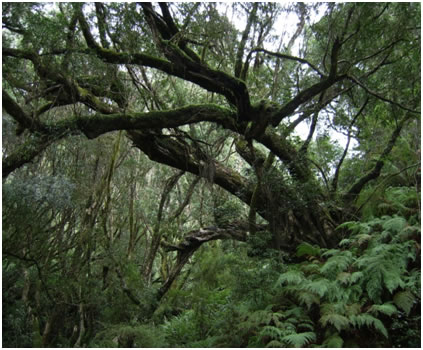
Photograph by Robert Bednarik
Summary of final report on the Australian Flora Foundation funded project:
Carola Kuramotto de Bednarik1. With significant contributions from: Dr Geoffrey Cary1, Prof. Ross Bradstock2, Dr, Malcolm Gill1, Dr Karen King1, Dr Mike Austin3 and Dr Emlyn Williams4.
1Fenner School of Environment and Society, The Australian National University, 48 Linnaeus Way, Australian National University, Canberra, ACT 0200, Australia.
2Centre for Environmental Risk Management of Bushfires, School of Biological Sciences, University of Wollongong, Wollongong New South Wales 2522, Australia.
3CSIRO Division of Sustainable Ecosystem (Ecosystem Sciences). 4Statistical Consulting Unit, The Australian National University, Canberra ACT 0200, Australia.
20 Dec 2012
While Australian rainforests have been classified as fire intolerant, studies conducted in Australian environments over the past few years indicate that rainforest species, as a group, are able to regenerate following fires. These discrepancies—combined with past studies which identified several different environmental variables as the principal environmental controls for rainforest distribution—may be the result of the use of different definitions of rainforests, varying scales of investigation and the use of proxies for fire regimes.
This study compared the environmental controls for rainforest distribution using a uniform floristic definition of rainforests at two scales—map or topo-scale and plot or meso-scale—and observed fire regime data in the Sydney region. General Linear Models and Generalised Additive Models were used to construct the rainforest models. Best models were selected by ranking the Akaike information criteria (AIC), receiver operator area under the curve (ROC AUC), kappa statistic and deviance explained.
Preliminary results indicate that, as a general rule, precipitation is the main environmental control for all rainforest types in the Sydney region at both scales. These results also indicate that varying vegetation types have different levels of sensitivity to the scale used in modelling. Scale differences can be observed for the secondary environmental controls of rainforest occurrence. Warm temperate rainforests and cool temperate rainforest models did not show different responses to scale and indicate that a combination of temperature and precipitation are most important for both rainforest types.
Temperate rainforest models are susceptible to scale differences: map-scale models identified time since fire as an influential variable while plot-scale models identified landscape position as more important following precipitation. Finally, the scale sensitivity of dry rainforests and subtropical rainforests could not be determined conclusively. Preliminary results indicate that these rainforest types may be controlled by fire regimes following precipitation. Additional analyses—currently in progress— will clarify this.
